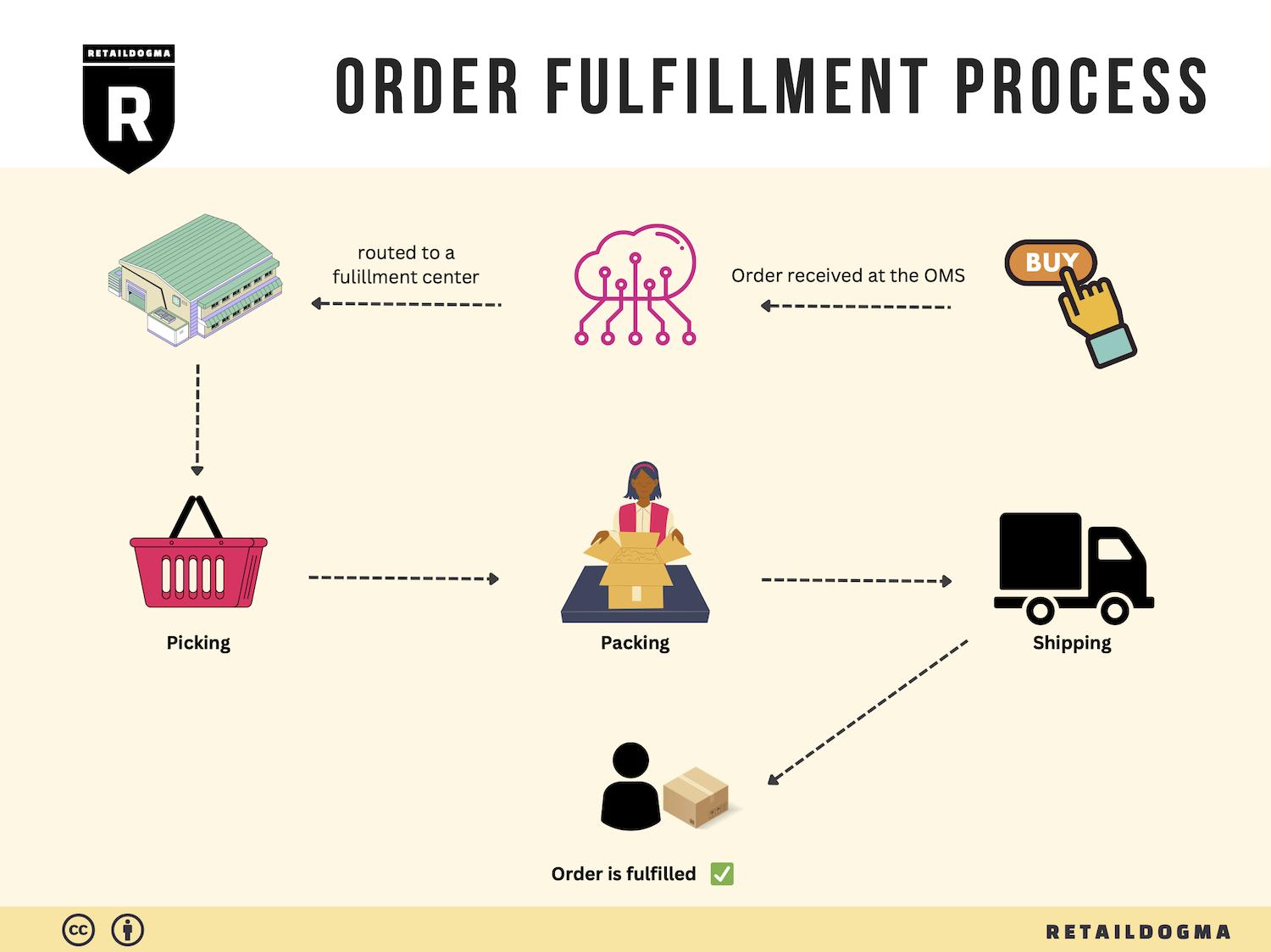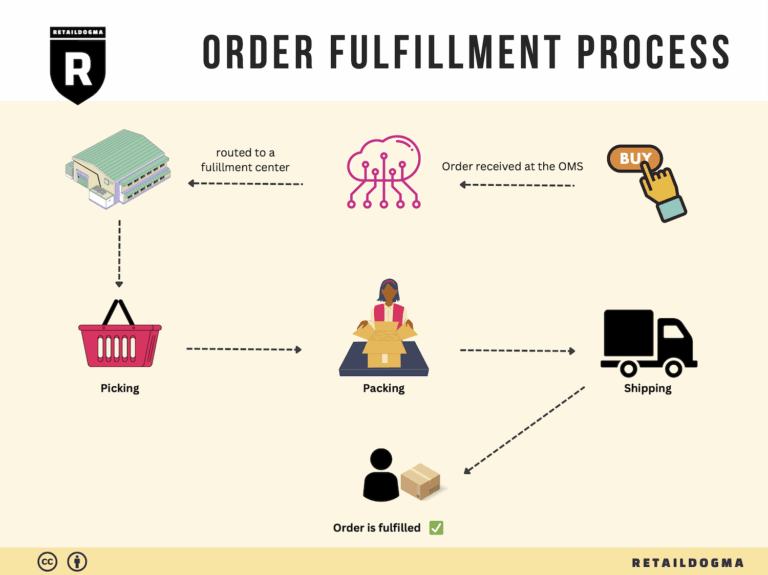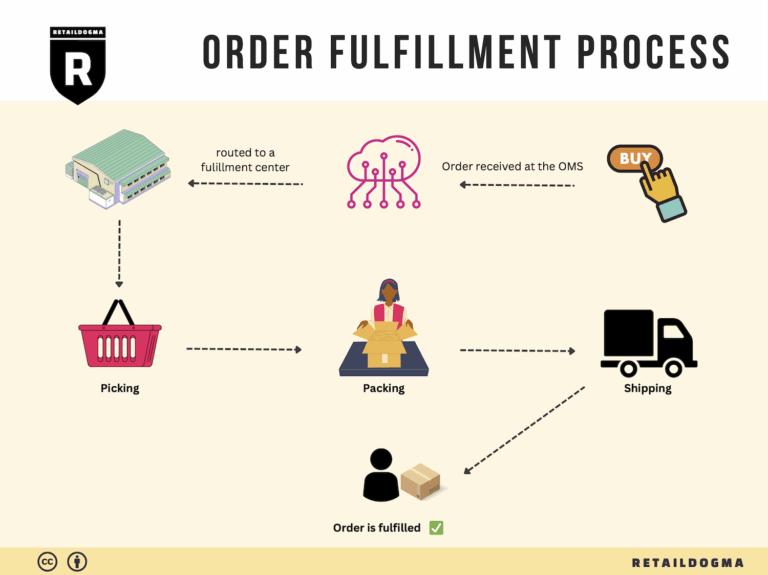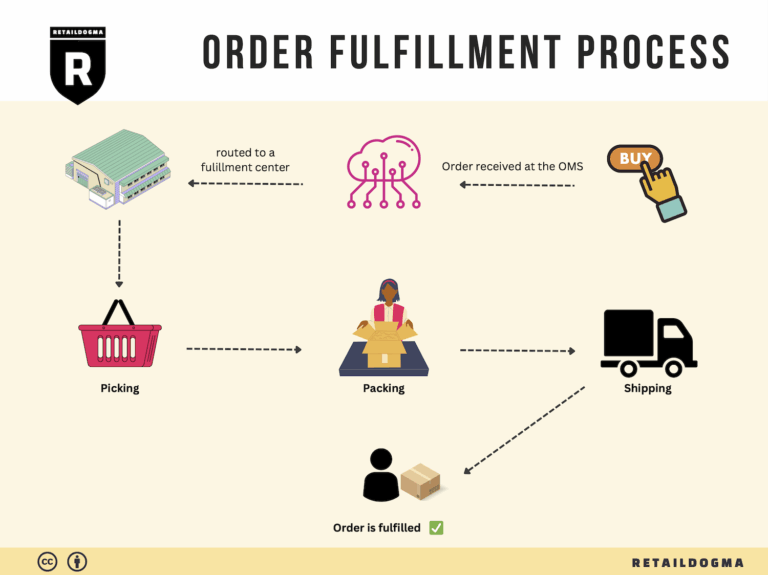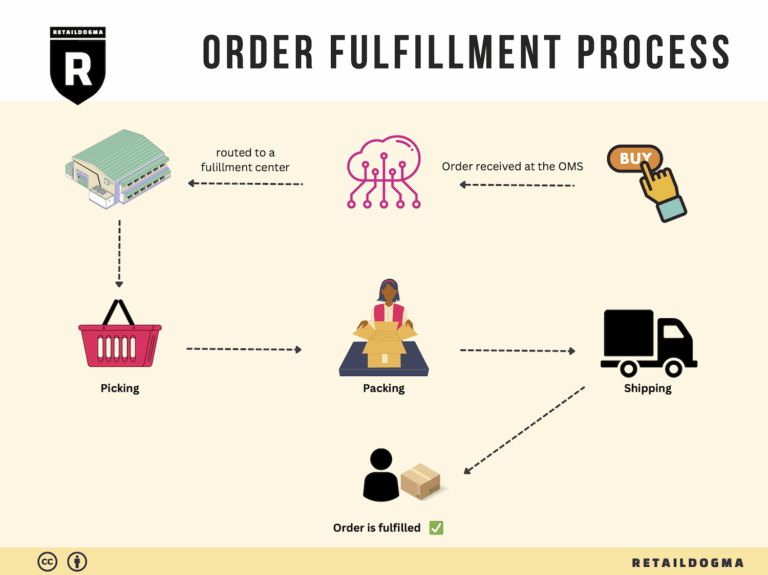Ecommerce Fulfillment Services: The Ultimate Guide (2025)
What is E-commerce Fulfillment? An Introduction for Growing Businesses
Navigating the Challenges of Order Fulfillment
As an e-commerce business owner, you may find yourself grappling with a common challenge: the overwhelming task of packing and shipping orders. While the thrill of making sales can be exhilarating, the reality of managing logistics can quickly dampen that excitement. The process of fulfilling orders—getting products from your inventory to your customers’ doorsteps—can become a bottleneck, diverting your focus from growing your business to merely keeping up with order demands.
E-commerce fulfillment encompasses the entire journey of a product from when a customer places an order to when they receive it. This process includes inventory management, order processing, packing, shipping, and sometimes even handling returns. For growing businesses, mastering fulfillment is critical to maintaining customer satisfaction and ensuring repeat purchases. A well-optimized fulfillment strategy not only enhances the customer experience but also streamlines operations, freeing up valuable time and resources for more strategic initiatives.
In this guide, we will delve into various fulfillment models that can suit your business needs, such as Third-Party Logistics (3PL) and Fulfillment by Amazon (FBA). We’ll explore the core services provided by fulfillment centers, including storage, packing, and shipping, and discuss how these services can alleviate the burdens of managing logistics in-house.
Choosing the right fulfillment partner is a crucial step in this process. Factors like location, service offerings, and cost structures can significantly impact your business’s efficiency and profitability. This guide will provide practical tips on how to evaluate potential partners, ensuring they align with your operational goals and customer expectations.
Furthermore, we will break down the pricing models associated with fulfillment services, helping you understand the costs involved and how they fit into your overall budget. By the end of this guide, our goal is to empower you with the knowledge and insights needed to make informed decisions about your logistics strategy. With the right fulfillment approach, you can focus on scaling your sales and enhancing your brand, rather than getting bogged down by the complexities of order fulfillment.
What You’ll Learn In This Guide
- What is E-commerce Fulfillment? An Introduction for Growing Businesses
- The Order Fulfillment Process: From ‘Buy’ Button to Customer’s Door
- Comparing Fulfillment Models: In-House vs. 3PL vs. Dropshipping
- A Deep Dive into Amazon FBA: Pros, Cons, and Who It’s For
- Core Services Offered by Fulfillment Centers
- How to Choose a Fulfillment Partner: A 6-Point Checklist
- Understanding Fulfillment Pricing: A Breakdown of Common Fees
- Frequently Asked Questions (FAQs) about Fulfillment
- Conclusion: Is Outsourcing Fulfillment the Right Move for Your Business?
- Important Disclaimer
The Order Fulfillment Process: From ‘Buy’ Button to Customer’s Door
1. Receiving Inventory
The order fulfillment process begins with receiving inventory from suppliers into the fulfillment center. This step is crucial as it sets the foundation for efficient order processing. When products arrive, they are checked against shipping documents to ensure accuracy and quality. This is often facilitated through the use of Stock Keeping Units (SKUs), which are unique identifiers assigned to each product.
Proper inventory management at this stage is vital for preventing stock discrepancies and ensuring that the right products are available when orders come in. A well-organized receiving process minimizes errors, which can lead to delays in fulfilling customer orders. Additionally, accurate receiving helps maintain a healthy relationship with suppliers, as discrepancies can lead to disputes over invoicing or product quality.
2. Warehouse Storage
Once inventory is received, it is stored in designated areas within the fulfillment center. Efficient warehouse storage is essential for optimizing the picking process later on. Fulfillment centers typically use systematic storage solutions, such as pallet racking or shelving, and may employ methods like ABC analysis to categorize products based on their sales velocity.
Effective warehouse storage reduces the time it takes to locate products during order picking, which directly impacts fulfillment speed. For businesses looking to scale, understanding the layout and organization of storage can lead to improved operational efficiency and reduced labor costs. Proper inventory rotation practices, such as FIFO (First In, First Out), also ensure that older stock is sold before it becomes obsolete.
3. Order Picking
As customers place orders through the e-commerce platform, the fulfillment center initiates the order picking process. This involves retrieving the ordered items from their storage locations. Fulfillment centers often utilize pick lists, which detail the items and quantities to be collected for each order.
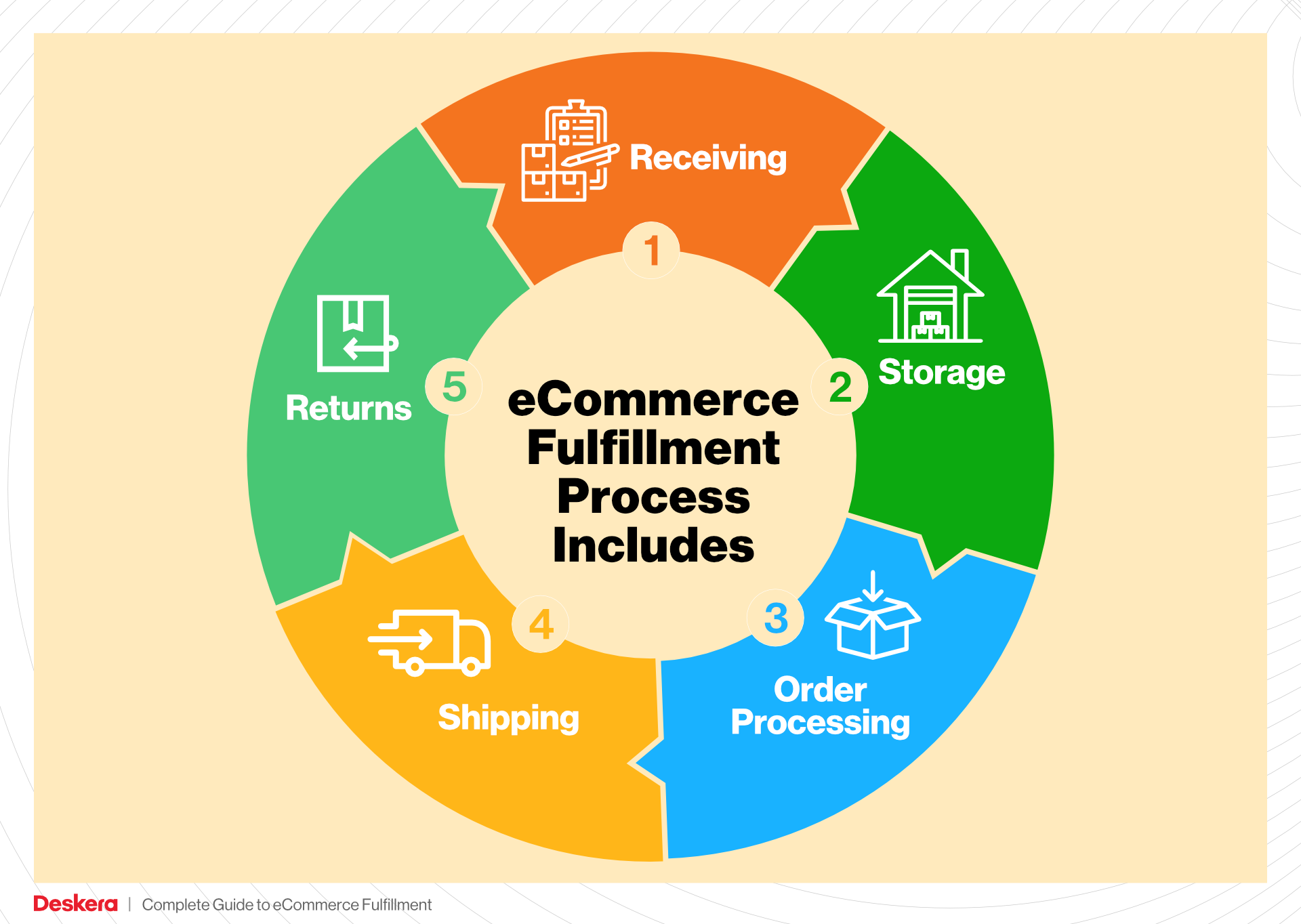
The picking process is critical as it directly affects order accuracy and fulfillment speed. Many fulfillment centers employ various picking methods, such as batch picking (where multiple orders are picked simultaneously) or wave picking (where orders are picked in waves based on shipping schedules). Optimizing this step can significantly enhance operational efficiency, reduce labor costs, and improve customer satisfaction by ensuring that orders are fulfilled accurately and promptly.
4. Order Packing
After the items are picked, they are brought to the packing station, where they are prepared for shipment. Packing is not just about placing items into boxes; it involves ensuring that products are adequately protected during transit. This may include using packing materials like bubble wrap or foam peanuts, as well as selecting the right-sized boxes to minimize shipping costs.
Effective packing is essential for reducing the likelihood of damages during shipping, which can lead to returns and dissatisfaction. Moreover, including packing slips and any relevant documentation is important for maintaining clear communication with the customer. Businesses can also consider adding personalized touches, such as thank-you notes, to enhance the customer experience—though this may depend on the capabilities of the fulfillment center.
5. Shipping & Delivery
The final step in the fulfillment process is shipping the packed orders to customers. This involves selecting a shipping carrier and determining the most efficient shipping method based on factors such as destination, weight, and delivery speed. Many fulfillment centers integrate with shipping providers to streamline this process, allowing for real-time tracking and updates.
Shipping and delivery are critical for customer satisfaction; delays or inaccuracies can lead to frustration and damage to the brand’s reputation. Businesses should prioritize selecting fulfillment partners with reliable shipping options and consider geographic proximity to their customer base to reduce transit times. Additionally, offering various shipping options, such as standard and expedited delivery, can cater to different customer needs and preferences, ultimately enhancing the overall shopping experience.
By understanding and optimizing each of these steps in the order fulfillment process, e-commerce businesses can scale effectively while maintaining high levels of customer satisfaction.
Comparing Fulfillment Models: In-House vs. 3PL vs. Dropshipping
Fulfillment Model Comparison Table
| Model | Who Handles Inventory | Best For (Business Stage) | Key Advantage | Key Disadvantage |
|---|---|---|---|---|
| In-House Fulfillment | The business itself | Startups to established | Full control over inventory and operations | High overhead costs and scalability challenges |
| Third-Party Logistics (3PL) | Third-party provider | Growing to large businesses | Cost-effective scaling and expertise | Less control over the fulfillment process |
| Dropshipping | Supplier/vendor | Startups and niche brands | Low startup costs and minimal inventory risk | Lower profit margins and potential quality issues |
In-House Fulfillment
In-house fulfillment means that a business manages its entire order fulfillment process internally. This includes inventory management, order processing, packaging, and shipping. Companies that opt for in-house fulfillment typically have their own warehouse or storage space where they keep their products. This model is particularly advantageous for businesses that want complete control over their inventory and fulfillment processes. They can customize packaging, offer personalized messages, and ensure quality control at every step. However, this model comes with significant challenges. The overhead costs can be substantial, with expenses related to staffing, warehousing, and equipment. As the business grows, scaling operations can become cumbersome and resource-intensive, potentially impacting efficiency and customer satisfaction.
Third-Party Logistics (3PL)
Third-party logistics (3PL) providers manage a business’s logistics and fulfillment processes. These companies offer services such as storage, inventory management, order processing, and shipping. By outsourcing these functions to a 3PL, businesses can leverage the provider’s infrastructure, expertise, and technology. This model is particularly beneficial for growing businesses that need to scale quickly without the upfront investment in warehousing and logistics. A key advantage of using a 3PL is the ability to focus on core business activities, such as marketing and product development, while the 3PL handles the logistics. However, businesses may experience a loss of control over the fulfillment process, which can lead to challenges with customer service and inventory accuracy. Additionally, there are costs associated with 3PL services, which can vary widely depending on the provider and the level of service required.
Dropshipping
Dropshipping is a fulfillment model where the retailer does not hold inventory. Instead, when a customer places an order, the retailer purchases the item from a third-party supplier, who then ships it directly to the customer. This model is particularly appealing for startups and niche brands because it requires minimal upfront investment and eliminates the need for inventory management. The key advantage of dropshipping is the low risk associated with holding unsold inventory, making it easier to test new products and respond to market demands. However, dropshipping also has significant disadvantages, including lower profit margins due to reliance on suppliers and potential quality control issues, as the retailer has limited oversight of the product before it reaches the customer. Additionally, shipping times can be longer, leading to potential dissatisfaction among customers. As businesses scale, they may find that the dropshipping model becomes less sustainable due to these factors, prompting a reevaluation of their fulfillment strategy.
In summary, each fulfillment model has its strengths and weaknesses, and the best choice for your business will depend on your specific needs, stage of growth, and long-term goals. In-house fulfillment offers control but can be resource-intensive; 3PL provides scalability and expertise but with less control; and dropshipping minimizes risk but often at the cost of margins and quality assurance. Careful consideration of these factors will enable e-commerce businesses to select the most suitable fulfillment approach for their unique circumstances.
A Deep Dive into Amazon FBA: Pros, Cons, and Who It’s For
What is Fulfillment by Amazon (FBA)?
Fulfillment by Amazon (FBA) is a service provided by Amazon that allows sellers to store their products in Amazon’s fulfillment centers. When a customer places an order for a product listed through FBA, Amazon takes care of all aspects of order fulfillment, including picking, packing, shipping, and customer service. This service enables sellers to leverage Amazon’s vast logistics network and customer service capabilities, enhancing their ability to reach customers effectively.
To utilize FBA, sellers first create an Amazon seller account and list their products. They then ship their inventory to Amazon’s fulfillment centers. Once the inventory is in place, Amazon manages the entire order process, handling everything from order processing to returns. Sellers can focus on their business growth strategies, knowing that their fulfillment logistics are in the hands of a seasoned provider.
How FBA Works
-
Inventory Storage: Sellers send their products to Amazon’s designated fulfillment centers. Amazon stores the inventory in their warehouses until an order is placed.
-
Order Processing: When a customer purchases an FBA product, Amazon automatically processes the order. This includes locating the product, packing it, and shipping it directly to the customer.
-
Shipping and Handling: Amazon takes care of the shipping logistics, ensuring that orders are shipped quickly and efficiently. This includes providing tracking information to customers.
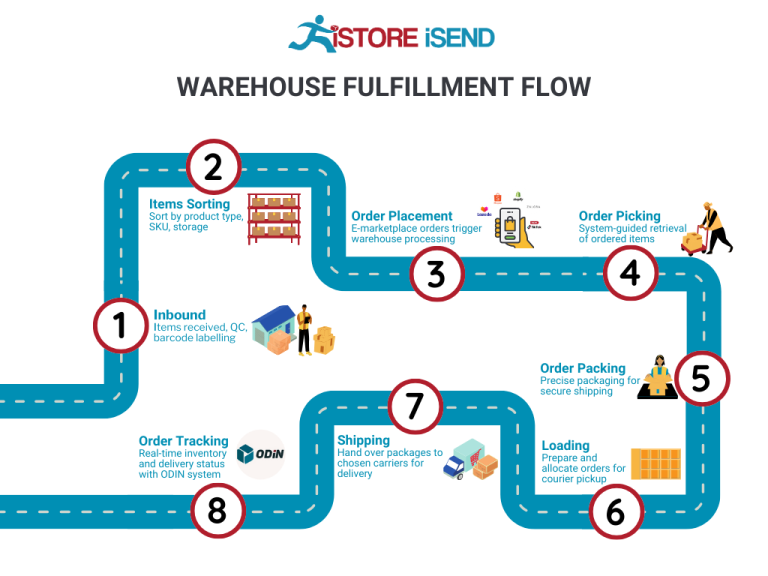
-
Customer Service: Amazon also handles customer inquiries and returns related to FBA orders. This can significantly reduce the workload for sellers, allowing them to focus on other aspects of their business.
-
Multi-channel Fulfillment: Sellers can also use FBA to fulfill orders from other sales channels, not just Amazon. This feature allows businesses to streamline their logistics and maintain a consistent customer experience across platforms.
Pros of Fulfillment by Amazon
Prime Eligibility
One of the most significant advantages of FBA is that products fulfilled by Amazon are eligible for Amazon Prime. This opens up access to millions of Prime members who prefer to purchase items with the promise of fast, free shipping. Being part of the Prime program can significantly boost sales and visibility.
Customer Trust
Amazon has built a reputation for reliable service and customer satisfaction. By using FBA, sellers can benefit from this trust. Customers are more likely to purchase products that are fulfilled by Amazon due to the assurance of quality service, including easy returns and responsive customer support.
Multi-channel Fulfillment
FBA allows sellers to fulfill orders from multiple sales channels, including their own websites and other e-commerce platforms. This flexibility can streamline logistics and reduce the complexity of managing inventory across different sales channels.
Efficient Logistics
Amazon’s extensive logistics network is designed for efficiency. This means that orders are processed quickly, often resulting in faster delivery times. Sellers benefit from Amazon’s expertise in handling shipping logistics, which can lead to improved customer satisfaction.
Scalability
FBA allows businesses to scale without the need for significant investment in infrastructure. Sellers can increase their inventory and sales volume without worrying about warehousing or staffing, as Amazon manages these aspects.
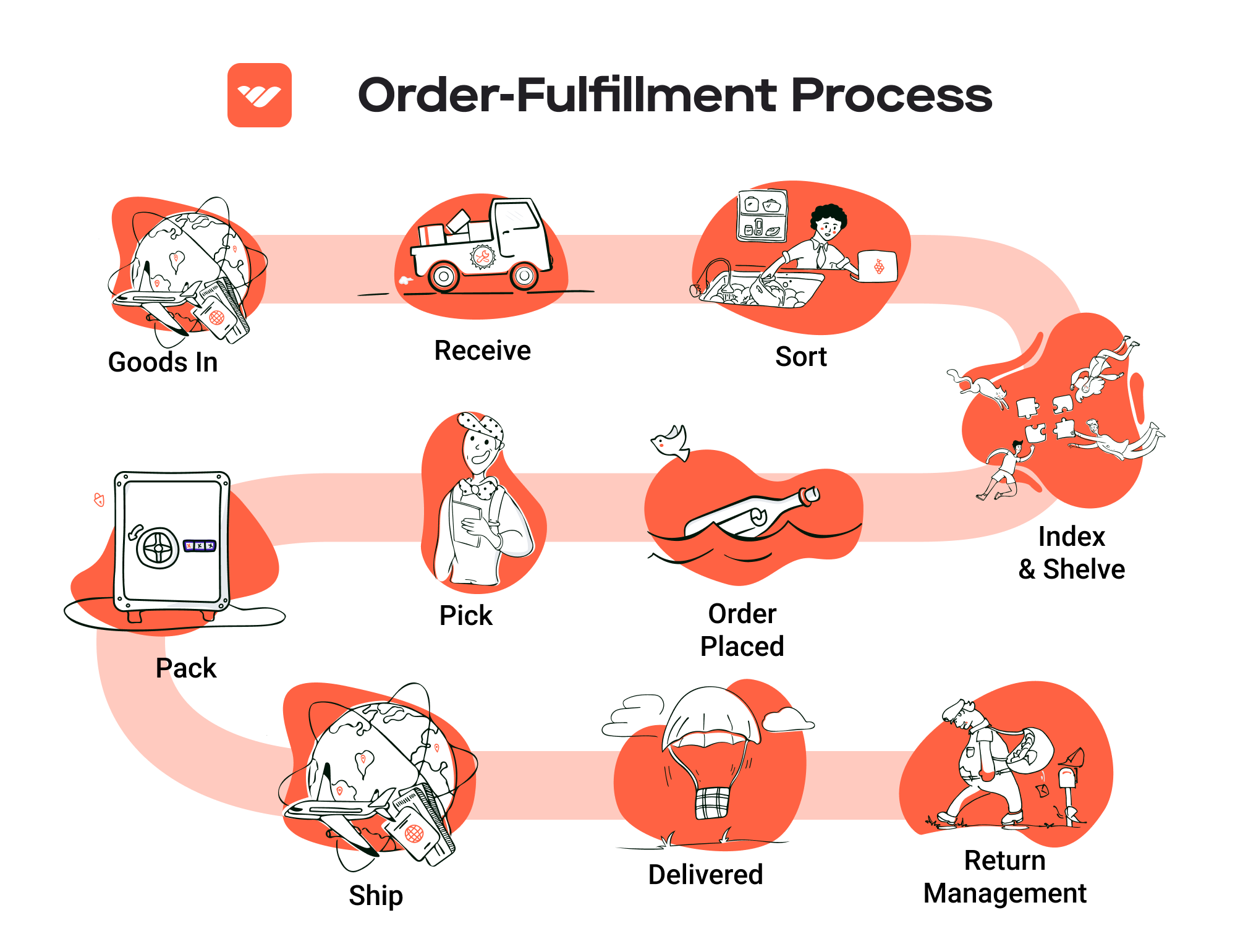
Cons of Fulfillment by Amazon
High Fees
While FBA provides many benefits, it comes at a cost. Sellers must pay various fees, including storage fees for their inventory and fulfillment fees for each order processed. These costs can add up quickly, especially for small businesses or those with low-profit margins.
Strict Inventory Rules
Amazon has stringent policies regarding inventory management. Sellers must adhere to specific guidelines regarding product condition, packaging, and labeling. Failure to comply with these rules can lead to penalties or the removal of listings.
Commingling Risks
FBA uses a commingled inventory system, which means that products from different sellers are stored together. This can pose risks for sellers, as it may lead to receiving returns or shipping the wrong products. If a customer returns an item that was mistakenly identified as yours, it can complicate the returns process and affect your reputation.
Limited Control
Sellers relinquish a degree of control over their fulfillment process when using FBA. This includes shipping times, packaging, and customer service responses. If issues arise, sellers may find it challenging to resolve them quickly.
Inventory Replenishment Delays
Sellers are responsible for monitoring their inventory levels and replenishing stock as needed. If a product runs out of stock, it can lead to lost sales opportunities and negatively impact the seller’s ranking on Amazon.
Who is FBA Best For?
Fulfillment by Amazon is particularly well-suited for:
- Small to Medium-Sized Businesses: Companies looking to scale quickly without investing heavily in logistics and warehousing can benefit significantly from FBA.
- E-commerce Entrepreneurs: New sellers who want to leverage Amazon’s established infrastructure and customer base can find FBA an attractive option.
- Sellers with High Volume: Businesses that anticipate a high volume of sales can maximize the benefits of FBA, as the costs may be offset by increased sales and reduced operational burdens.
- Brands Focused on Customer Experience: Companies that prioritize customer service and satisfaction can enhance their offerings through Amazon’s reliable fulfillment and customer support systems.
In conclusion, while FBA offers numerous advantages that can significantly enhance an e-commerce business’s logistics and customer service capabilities, it is essential for sellers to weigh these benefits against the potential drawbacks. Understanding the operational demands and financial implications of FBA will enable sellers to make informed decisions that align with their business goals.
Core Services Offered by Fulfillment Centers
Inventory Management & Warehousing
Fulfillment centers provide robust inventory management and warehousing services designed to streamline the storage and tracking of products. This includes receiving inventory, organizing it within the warehouse, and maintaining optimal stock levels to meet customer demand.
The benefit of effective inventory management cannot be overstated. By outsourcing this function to a fulfillment center, e-commerce businesses can minimize the complexities associated with stock control. Advanced inventory management systems allow fulfillment centers to provide real-time data on stock levels, helping businesses to avoid overstocking or stockouts. This agility enables e-commerce owners to make informed decisions about inventory replenishment and product offerings.
Moreover, storing inventory in a fulfillment center reduces the need for physical retail space, thereby lowering overhead costs. Businesses can focus on scaling their operations without the burden of managing a warehouse, ultimately allowing for better allocation of resources towards marketing, product development, and customer engagement.
Pick and Pack Services
Pick and pack services are a cornerstone of fulfillment center operations. This process involves selecting items from the warehouse (picking) and packaging them for shipment (packing). When an order is placed, the fulfillment center uses its inventory management system to identify the correct items, retrieve them from the shelves, and prepare them for delivery.
The primary advantage of utilizing pick and pack services is the speed and efficiency they offer. Fulfillment centers are equipped with streamlined processes and skilled labor, enabling them to process orders much faster than most e-commerce businesses could manage in-house. This speed translates to quicker delivery times for customers, enhancing their overall shopping experience.
Additionally, fulfillment centers often employ sophisticated technology, such as barcode scanning and automated systems, to reduce errors during the picking and packing stages. This accuracy helps maintain customer satisfaction and protects against costly returns due to fulfillment mistakes. For e-commerce businesses looking to scale, partnering with a fulfillment center for pick and pack services can significantly improve operational efficiency and customer loyalty.
Kitting and Assembly
Kitting and assembly services offered by fulfillment centers allow e-commerce businesses to combine multiple products into a single package or kit before shipping. This could involve assembling items that need to be bundled together, such as promotional packages, or creating custom kits that include various components tailored to specific customer needs.
The benefits of kitting and assembly are manifold. For businesses, this service simplifies the order fulfillment process by reducing the time and labor required to prepare complex orders. Instead of managing multiple items separately, fulfillment centers handle the assembly, ensuring that customers receive exactly what they ordered in a ready-to-ship format.
Moreover, kitting can enhance customer satisfaction by offering unique product combinations that are not available elsewhere. This differentiation can lead to increased sales and customer retention. Additionally, by outsourcing kitting and assembly, e-commerce businesses can free up valuable internal resources, allowing them to focus on core activities such as marketing and customer service.
Returns Management (Reverse Logistics)
Returns management, often referred to as reverse logistics, is an essential service provided by fulfillment centers. This process involves handling product returns from customers, assessing the returned items, restocking them if appropriate, and managing any necessary exchanges or refunds.
Efficient returns management is critical for e-commerce businesses, as it directly impacts customer satisfaction and brand loyalty. A streamlined returns process allows customers to easily return items, thus fostering trust and encouraging repeat purchases. When fulfillment centers manage returns, they can quickly assess the condition of returned products and determine the best course of action, whether it’s restocking, refurbishing, or disposing of the item.
Additionally, effective returns management can help e-commerce businesses minimize losses associated with returned merchandise. By analyzing return data, businesses can identify trends and potential issues with specific products, allowing them to make informed adjustments to their offerings or marketing strategies.
In conclusion, fulfillment centers offer a suite of core services that can significantly enhance the operational capabilities of e-commerce businesses. By leveraging these services—inventory management and warehousing, pick and pack services, kitting and assembly, and returns management—businesses can scale efficiently, reduce costs, and improve customer satisfaction. For entrepreneurs looking to grow their online presence, partnering with a fulfillment center is a strategic move that can facilitate smoother operations and greater success in the competitive e-commerce landscape.
How to Choose a Fulfillment Partner: A 6-Point Checklist
Location & Warehouse Network
Importance: The geographical location of your fulfillment partner’s warehouses plays a critical role in shipping efficiency and costs. A partner with strategically placed warehouses can reduce shipping times and expenses, improving customer satisfaction.
Questions to Ask:
– Where are your warehouses located, and how do these locations align with my customer base?
– Do you offer multiple fulfillment centers to ensure nationwide coverage?
– How do you handle shipping to international customers, if applicable?
Technology & Integrations
Importance: A fulfillment partner’s technology should seamlessly integrate with your e-commerce platform. This ensures real-time inventory management, order processing, and tracking, which are vital for maintaining operational efficiency and customer transparency.
Questions to Ask:
– What technology stack do you use for order processing and inventory management?
– Can your systems integrate with my current e-commerce platform (e.g., Shopify, WooCommerce, Magento)?
– How do you handle updates and system maintenance to ensure minimal disruption to operations?
Specializations (e.g., cold storage, oversized items)
Importance: Depending on the nature of your products, you may require specific fulfillment capabilities. For instance, if you sell perishable goods, a partner with cold storage facilities is essential. Understanding a partner’s specializations can prevent costly mistakes and ensure your products are handled correctly.
Questions to Ask:
– What types of products do you specialize in handling? Do you have experience with my product category?
– Do you offer any specialized storage or handling solutions, such as cold storage or hazardous materials?
– How do you manage inventory for unique product requirements, such as oversized items or fragile goods?
Scalability & Capacity
Importance: As your business grows, your fulfillment needs will likely change. A partner that can scale with you will help ensure that you can meet increased demand without compromising service quality. Understanding their capacity to handle fluctuations in order volume is crucial for long-term success.
Questions to Ask:
– What is your current capacity for order fulfillment, and how do you handle spikes in demand?
– Can you provide examples of how you have scaled operations for other clients?
– What measures do you have in place to ensure consistent service during peak seasons or unexpected surges in orders?
Pricing and Contracts
Importance: Understanding the pricing structure and contract terms is vital for budgeting and financial planning. Hidden fees can erode profit margins, so it’s important to clarify all costs upfront.
Questions to Ask:
– What are your standard fees for storage, order processing, and shipping?
– Are there any additional costs I should be aware of, such as integration fees or penalties for low inventory?
– What are the terms of the contract, and is there flexibility for renegotiation as my business evolves?
Customer Support & Reviews
Importance: Reliable customer support is essential for resolving issues quickly and maintaining operational efficiency. Additionally, reviews and testimonials can provide insight into a partner’s reliability and service quality.
Questions to Ask:
– What customer support options do you offer (e.g., phone, email, chat), and what are your response times?
– Can you provide references or case studies from current or past clients in my industry?
– How do you handle fulfillment errors or customer complaints, and what is your process for resolution?
Conclusion
Choosing the right fulfillment partner is a critical decision that can significantly impact your e-commerce business’s success. By carefully considering each of the points in this checklist, you can make an informed choice that aligns with your operational needs and customer expectations. Don’t hesitate to conduct thorough research and ask potential partners the right questions to ensure you find a fulfillment center that can grow with your business.
Understanding Fulfillment Pricing: A Breakdown of Common Fees
Initial Setup Fees
When partnering with a fulfillment center, businesses typically encounter initial setup fees. These costs cover the integration of your e-commerce platform with the fulfillment center’s systems, ensuring seamless communication between your online store and their logistics operations. The setup process may include configuring software, customizing workflows, and training staff on how to use the system effectively.
The amount charged can vary significantly depending on the complexity of the integration and the specific needs of your business. For example, a straightforward integration with a well-known e-commerce platform might incur lower fees compared to a more complex setup that requires custom API development. It’s essential to clarify these costs upfront and ask about any potential ongoing fees related to system maintenance or updates.
Receiving Fees
Receiving fees are charged when inventory arrives at the fulfillment center. These fees account for the labor and resources required to unload, inspect, and store your products. The cost can depend on several factors, including the volume of goods being received and the complexity of the products.
Typically, receiving fees are calculated based on a per-unit basis or per shipment. For instance, a fulfillment center may charge a flat fee for the first 100 items received and a reduced rate for each additional item beyond that threshold. Understanding how receiving fees are structured will help you budget accurately and negotiate better terms with your fulfillment provider.
Storage Fees (per pallet/bin)
Storage fees are incurred for keeping your inventory within the fulfillment center. These fees are generally charged on a monthly basis and can be calculated per pallet or bin. A pallet is a standard shipping platform that can hold multiple items, while a bin might refer to smaller storage units for individual items.
The costs for storage can vary based on the size of your inventory and the length of time you plan to store it. For example, some fulfillment centers may offer tiered pricing, where the cost per pallet decreases as the volume of stored pallets increases. Additionally, it’s important to inquire about any long-term storage fees that may apply if your products remain unsold for extended periods, as these can significantly impact your overall logistics expenses.
Pick & Pack Fees (per item/order)
Pick and pack fees cover the labor involved in selecting items from inventory and packaging them for shipment. This fee is typically charged on a per-item or per-order basis, depending on the fulfillment center’s pricing model.
For example, a fulfillment center may charge a flat fee for the first item in an order and a smaller fee for each additional item picked and packed. Some providers may also offer discounts for larger orders or recurring customers. Understanding this fee structure is crucial for accurately forecasting fulfillment costs, especially during peak sales periods when order volumes can surge.
Shipping Fees
Shipping fees are one of the most significant costs associated with fulfillment. These fees encompass the charges incurred for transporting your products from the fulfillment center to your customers. Shipping costs can vary based on multiple factors, including the shipping method selected (standard, expedited, etc.), the destination, and the weight and dimensions of the package.
Most fulfillment centers negotiate shipping rates with carriers and may pass these savings on to their clients. It’s advisable to discuss shipping options and costs upfront, as well as any potential surcharges for specific delivery requirements or zones. Additionally, some fulfillment centers may offer flat-rate shipping, which can simplify budgeting for shipping expenses.
Tips for Getting an Accurate Quote
To ensure you receive an accurate quote from a fulfillment center, consider the following tips:
-
Provide Detailed Information: Clearly outline your business model, product types, order volumes, and any specific requirements you may have. The more information you provide, the better the fulfillment center can tailor their quote to your needs.
-
Ask About Hidden Fees: Inquire about any additional costs that may not be included in the initial quote, such as long-term storage fees, return processing fees, or fees for special packaging.
-
Compare Multiple Providers: Obtain quotes from several fulfillment centers to compare pricing models and services. This will help you identify the best fit for your business needs and budget.
-
Negotiate Terms: Don’t hesitate to negotiate pricing, especially if you expect to have high order volumes. Many fulfillment centers are open to discussions, especially with clients who can provide consistent business.
-
Review Contracts Carefully: Before signing any agreement, carefully review the terms and conditions, particularly those related to pricing and fees. Understanding the contract will help you avoid unexpected costs down the line.
By understanding these common fulfillment pricing models and following these tips, e-commerce business owners can make informed decisions when selecting a fulfillment partner, ultimately leading to improved operational efficiency and customer satisfaction.
Frequently Asked Questions (FAQs) about Fulfillment
1. What is a fulfillment center?
A fulfillment center is a third-party logistics provider that manages the storage, packing, and shipping of products for e-commerce businesses. When an order is placed on your website, the fulfillment center processes it by picking the item from inventory, packing it, and shipping it directly to the customer, thereby allowing you to focus on other aspects of your business.
2. How do fulfillment centers work?
Fulfillment centers operate by receiving your inventory and integrating with your e-commerce platform. When an order is placed, the center automatically receives the order details, locates the product, packs it, and ships it. They handle the logistics of order fulfillment, allowing you to streamline your operations and reduce overhead.
3. What’s the difference between a warehouse and a fulfillment center?
A warehouse is primarily a storage facility where products are kept for longer periods, often for bulk inventory management. In contrast, a fulfillment center focuses on processing and shipping orders quickly, handling the entire order fulfillment process from storage to delivery, thus playing a crucial role in e-commerce logistics.
4. What is a 3PL?
A 3PL, or third-party logistics provider, is a company that offers outsourced logistics services, which can include warehousing, fulfillment, and shipping. Fulfillment centers are a type of 3PL that specializes specifically in order fulfillment for e-commerce businesses.
5. How much do fulfillment services cost?
Fulfillment service costs vary based on several factors, including the volume of orders, the type of products being shipped, and the specific services required (such as storage, picking, packing, and shipping). Typically, businesses can expect to pay a combination of storage fees, order processing fees, and shipping costs.
6. What are the advantages of using a fulfillment center?
Using a fulfillment center provides numerous benefits, including reduced operational costs, faster order processing and shipping times, the ability to scale operations quickly, and the opportunity to focus on strategic business initiatives rather than day-to-day logistics.
7. What are the disadvantages of using a fulfillment center?
While fulfillment centers offer many advantages, there are potential drawbacks, including costs associated with their services, a lack of control over the fulfillment process, and limitations on customization for orders. Additionally, shipping times may be affected by the location of the fulfillment center.
8. Can I customize orders when using a fulfillment center?
Most fulfillment centers have limitations on order customization. While they can handle standard packing and shipping, adding personalized touches, such as handwritten notes or special packaging, may not be feasible. It’s essential to check with your provider about their customization options.
9. How do I choose the right fulfillment center for my business?
When selecting a fulfillment center, consider factors such as their location relative to your customer base, the range of services they offer, pricing structure, technology integration capabilities, and their reputation in the industry. Look for a provider that aligns with your business needs and can scale with you.
10. What happens if there is a fulfillment error?
If a fulfillment error occurs (e.g., wrong item shipped), the responsibility typically falls on your business to address the issue with the customer. While fulfillment centers aim to minimize errors, it’s crucial to have a clear communication plan and customer service strategy in place to handle any discrepancies effectively.
Conclusion: Is Outsourcing Fulfillment the Right Move for Your Business?
Evaluating the Benefits of Outsourcing Fulfillment
Outsourcing fulfillment can be a transformative decision for e-commerce businesses aiming for growth. By leveraging a fulfillment center, businesses can significantly save time, allowing them to focus on core activities such as marketing and product development. Fulfillment centers streamline the logistics of order processing, reducing the burden of packaging, shipping, and inventory management. This efficiency can lead to quicker turnaround times, ultimately enhancing customer satisfaction and retention.
Scalability is another compelling advantage. As your business grows, so does the volume of orders. Fulfillment centers are designed to handle fluctuations in order volume, enabling you to scale your operations without the need for significant investments in infrastructure or staffing. This flexibility means you can adapt quickly to market demands, seasonal spikes, or new product launches without compromising service quality.
Moreover, partnering with a fulfillment expert provides access to industry knowledge and best practices. These providers often utilize advanced technologies and logistics strategies that can improve accuracy and reduce shipping costs, giving your business a competitive edge.
However, the success of outsourcing fulfillment hinges on selecting the right partner. It’s crucial to choose a provider that aligns with your business goals, offers reliable service, and is strategically located to minimize shipping times.
Take Action
To determine if outsourcing fulfillment is the right move for your business, conduct a thorough audit of your current shipping and fulfillment processes. Analyze your order volume, shipping times, and customer feedback. Assess whether the operational savings and scalability offered by a fulfillment partner could enhance your overall business performance. By making an informed decision, you position your e-commerce venture for sustainable growth and success.
Important Disclaimer
⚠️ Important Disclaimer
The information in this guide is for educational purposes. Fulfillment services, pricing, and platform features change frequently. Always conduct your own due diligence and consult with providers directly before making business decisions.
